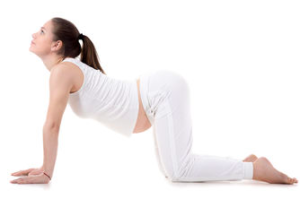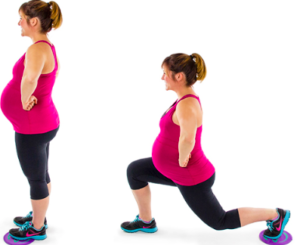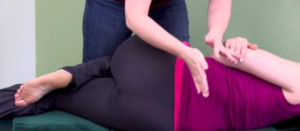
There are multiple ways that your baby can be positioned during pregnancy. Beginning around week 28, many babies begin to turn into the vertex position (head down). While head down is certainly better than breeched for vaginal births, the position of your baby upon turning head down affects the ease of labor and delivery.
Research shows that a baby that is occiput anterior (baby facing your spine) usually transition through the birthing canal easier than those who are occiput posterior (baby facing forward). There are different variations of occiput anterior and each provides a different outlook on labor and delivery. This article will explore the most beneficial stretches and movements to help aid in the anterior position for head down positioned babies.
4 Exercises That Can Help Position Your Baby Correctly for Optimal Labor
**Results vary from mother to mother. Do not do any part of this guide that causes pain or discomfort and be sure to talk to your healthcare provider before beginning any of the movements suggested in this guide.**
Cat/Cow—Arch your back upwards and then allow it to come back in line with your back, but not sag. Hold each moment for 5-10 seconds and repeat 5-10 times.

Lunges—Have someone assist you if possible. Follow the pictures and alternate sides for 5-10 reps.

Forward Leaning Inversion—(spinningbabies.com) Inversion allows gravity to help position your baby correctly and is the go to movement for breeched babies. This movement can be done on a stair, couch or chair. The goal is to hold the position for 30 seconds and stretch the uterine ligaments to allow less tension and more space for your baby to move. Contraindications include: heartburn, glaucoma, hypertension, or if you are at risk of a stroke.

Side Lying Release—(spinningbabies.com) According to spinning babies, this movement stretches the pelvic muscles. A partner is needed with this stretch and the goal is to maintain the alignment of your head, neck and shoulders while your leg hangs over the edge of the table, couch or any flat surface. Your partner should keep your hip aligned so that it doesn’t lean forward during the stretch. Your partner is also present to prevent a fall. Hold your leg in position for 1-3 minutes to administer the stretch while your partner slowly “rocks” your hips back and forth.

In addition to the above exercises, following the following 3 postural movements that use gravity as a source of fetal positioning.
- Lay on your left side more often than your right.
- Bounce on an exercise ball daily for a few minutes.
- When you sit, make sure your hips are higher than your knees. This includes at work, on the couch and in your car. When you lay down at night make sure your knees are not bent making them higher than your hips.
Webster Certified Chiropractor can Help too!
The Webster Technique was created by Dr. Webster with the goal of indirectly affecting fetal positioning by balancing the pregnant woman’s hips and sacrum. The shape of the pelvis can affect the ability of the baby to turn into position and a misalignment will prevent the above exercises from being effective.
By aligning the hips, sacrum and unwinding the soft tissue, a Webster Chiropractor can help provide the best environment for the baby to move. Aside from positioning, some of the benefits of chiropractic care during pregnancy include a decrease in labor and delivery time and relieving back pain and sciatica.
While many chiropractors treat women throughout pregnancy, only Webster Certified Practitioners are trained through the International Chiropractic Pediatric Association. Dr. Bob Mason, a Webster Certified Chiropractor in Charlotte, treats women at any stage of their pregnancies. The most common reasons that they seek care at Active Life Chiropractic include breeched presented babies, back pain, sciatica and overall wellness!




